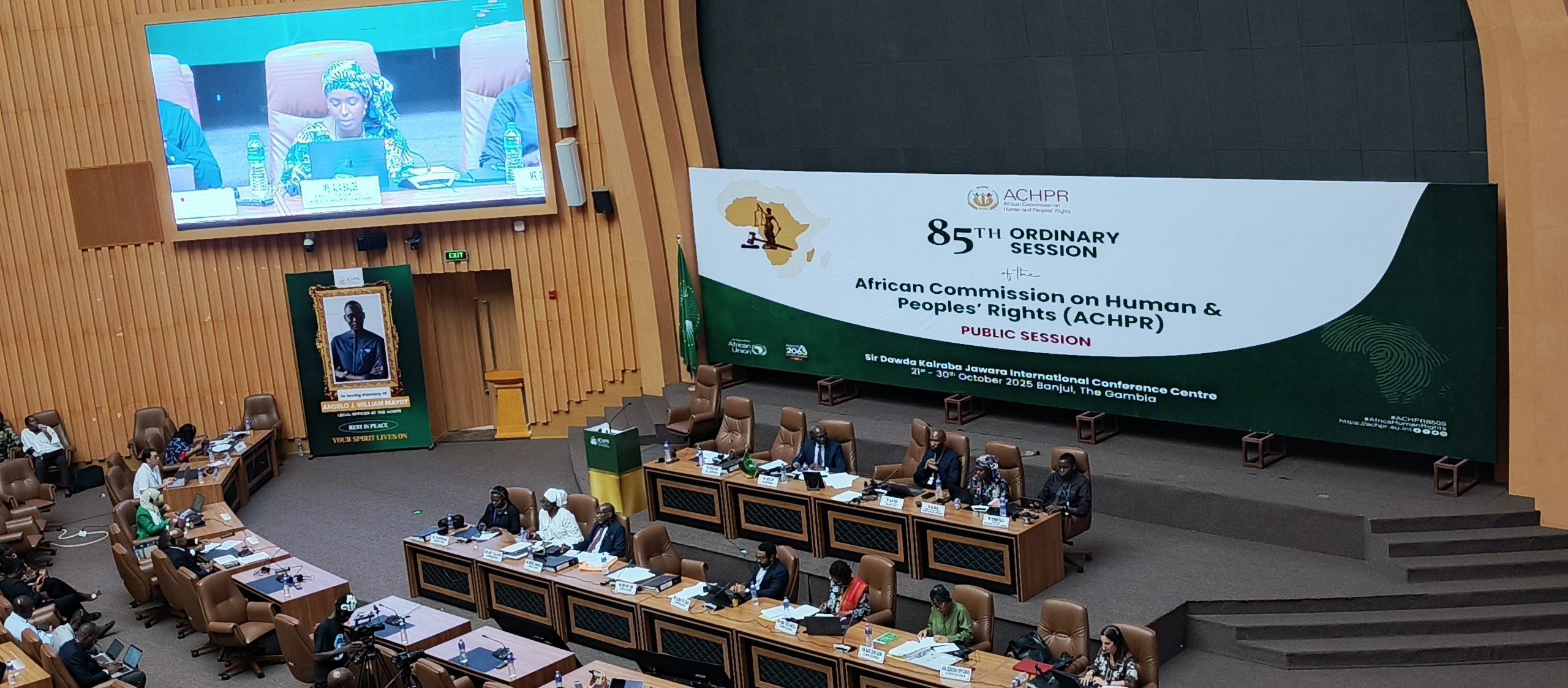Torture, threats and arbitrary arrests: UN warns of ‘serious abuses’ against Afghans forced to return – UN News

Report on Human Rights Violations and Sustainable Development Goal Setbacks for Afghan Returnees
A joint report from the UN Assistance Mission in Afghanistan (UNAMA) and the Office of the UN High Commissioner for Human Rights (OHCHR) documents severe human rights abuses against individuals involuntarily returned to Afghanistan. These violations represent a significant regression in the country’s progress towards several key Sustainable Development Goals (SDGs), particularly those concerning peace, justice, gender equality, and reduced inequalities.
Violations of SDG 16: Peace, Justice and Strong Institutions
The findings indicate a systematic failure to uphold SDG 16, which aims to promote peaceful and inclusive societies, provide access to justice for all, and build effective, accountable institutions. Despite a proclaimed general amnesty by the de facto authorities, individuals affiliated with the former government and its security forces face severe persecution.
- Reported Abuses:
- Arbitrary arrest and detention
- Torture and mistreatment
- Threats and intimidation
- Mock executions
- Targeted Individuals:
- Former government officials
- Former security forces personnel
- Media workers and civil society members
Testimonies reveal a complete breakdown of the rule of law (Target 16.3) and a rise in violence (Target 16.1). A former official described being detained and severely tortured after returning in 2023. A former judge reported living in hiding, fearing execution by former prisoners now in positions of power. These accounts demonstrate the absence of safe and just institutions for returnees.
Erosion of SDG 5: Gender Equality
The report highlights that the situation for returned women and girls constitutes a severe violation of SDG 5, which seeks to achieve gender equality and empower all women and girls. The UN High Commissioner for Human Rights, Volker Türk, stated that women and girls are subjected to measures amounting to “persecution solely on the basis of their gender.”
- Restrictions on Women and Girls:
- Denial of access to education (violates Target 5.1, 4.1)
- Lack of employment opportunities (violates Target 5.5, 8.5)
- Severe limitations on freedom of movement
A former female television journalist testified to being “effectively under house arrest” after her involuntary return, underscoring the complete removal of women from public life and the reversal of progress on ensuring women’s full and effective participation (Target 5.5).
Impact on Socio-Economic Rights and Inequalities (SDGs 4, 8, 10)
The persecution of specific groups exacerbates inequalities, directly contravening SDG 10 (Reduced Inequalities). The targeting of individuals “based on their profile” undermines the principle of inclusion. Furthermore, the large-scale forced returns from neighboring countries, with over 1.8 million people returning in 2025 alone, places immense strain on a nation already in a humanitarian crisis, challenging efforts for safe and orderly migration (Target 10.7).
- SDG 4 (Quality Education): The denial of educational access for returned women and girls is a direct setback.
- SDG 8 (Decent Work and Economic Growth): The inability of women to work and the necessity for others to live in hiding eliminates opportunities for decent work and productive employment.
Recommendations for Upholding Global Goals
In response to these grave human rights violations, the UN report urges Member States to align their actions with international law and their commitments to the Sustainable Development Goals. The core recommendation is to protect vulnerable Afghans from being returned to a situation of persecution.
- Halt Involuntary Returns: States must not return any individual to Afghanistan who faces a real risk of torture, persecution, or other serious human rights violations, in line with commitments to SDG 16.
- Expand Protection and Resettlement: Member States should increase resettlement opportunities for at-risk Afghans to ensure their safety and protection.
- Prioritize Vulnerable Groups: Priority for protection and resettlement must be given to those most likely to suffer human rights violations, including:
- Women and girls (SDG 5)
- Individuals affiliated with the former government and security forces (SDG 16)
- Media professionals, civil society activists, and human rights defenders (SDG 16)
SDGs Addressed in the Article
SDG 5: Gender Equality
- The article extensively details the persecution of women and girls in Afghanistan. It states they are “subjected to a series of measures that amount to persecution solely on the basis of their gender.” This directly connects to the core principle of SDG 5, which is to achieve gender equality and empower all women and girls.
SDG 10: Reduced Inequalities
- The report highlights human rights violations committed against Afghans “based on their profile,” targeting specific groups like women, media workers, and those affiliated with the former government. This addresses the goal of reducing inequality within a country. Furthermore, the discussion of “large-scale deportation campaigns” and the involuntary return of millions of Afghans touches upon the need for safe and responsible migration policies, a key aspect of reducing inequalities between countries.
SDG 16: Peace, Justice and Strong Institutions
- This is a central theme of the article. It documents a breakdown of justice and security, citing “threats, cases of torture, mistreatment and arbitrary arrest and detention.” The fact that former officials and judges live in hiding for fear of reprisals, despite a supposed amnesty, points to the absence of the rule of law and strong, just institutions. The UN’s call for states to protect at-risk individuals underscores the need for international justice mechanisms when national ones fail.
SDG 8: Decent Work and Economic Growth
- The article touches upon this goal through the testimony of a forcibly returned female journalist who states, “There are no job opportunities… for women and girls.” This highlights the denial of economic opportunities and the right to decent work for a significant portion of the population.
Specific Targets Identified
SDG 5: Gender Equality
- Target 5.1: End all forms of discrimination against all women and girls everywhere. The article provides clear evidence of this target’s relevance by describing how women face “persecution solely on the basis of their gender” and are denied basic freedoms.
- Target 5.2: Eliminate all forms of violence against all women and girls. The condition of being “effectively under house arrest” and the general climate of fear and frustration described by the female journalist can be interpreted as forms of psychological violence and severe rights violations.
- Target 5.5: Ensure women’s full and effective participation and equal opportunities for leadership in political, economic and public life. The article directly contradicts the achievement of this target by stating there are “no job opportunities, no freedom of movement and no access to education” for women.
SDG 10: Reduced Inequalities
- Target 10.2: Empower and promote the social, economic and political inclusion of all, irrespective of… status. The article shows the opposite is occurring, with individuals being targeted and excluded “based on their profile,” including their gender, profession (media workers), and past affiliations (former government and security forces).
- Target 10.7: Facilitate orderly, safe, regular and responsible migration and mobility of people. The article highlights the failure to meet this target through its description of “large-scale deportation campaigns” and the “involuntarily returned” status of millions of Afghans who are sent back to a country where they face significant risks.
SDG 16: Peace, Justice and Strong Institutions
- Target 16.1: Significantly reduce all forms of violence and related death rates everywhere. The article explicitly mentions “torture, beaten with sticks, cables and wood, subjected to water torture and faced a mock execution,” as well as death threats against a former judge, which are direct examples of the violence this target aims to reduce.
- Target 16.3: Promote the rule of law… and ensure equal access to justice for all. The prevalence of “arbitrary arrest and detention” and the fact that a former judge must live in hiding from former prisoners who are now “senior government officials” demonstrates a complete collapse of the rule of law and access to justice.
- Target 16.10: Ensure public access to information and protect fundamental freedoms. The targeting of “media workers” and the severe restrictions on women’s “freedom of movement” are direct violations of the fundamental freedoms this target seeks to protect.
Indicators for Measuring Progress
Mentioned Indicators
- Number of refugees/returnees: The article provides specific figures that can be used as an indicator. It states, “In 2025 alone, more than 1.8 million people have returned to Afghanistan, 1.5 million of them from Iran.” This data point directly measures the scale of involuntary returns relevant to Target 10.7.
Implied Indicators
- Proportion of women and girls with access to education and employment: The testimony that there is “no access to education” and “no job opportunities” for women implies that tracking enrollment and employment rates for women would be a key indicator of progress (or lack thereof) towards Targets 5.5 and 8.5.
- Number of verified cases of torture, arbitrary detention, and extrajudicial threats: The article’s descriptions of “torture, mistreatment and arbitrary arrest and detention” and a former judge being hunted by current officials imply that tracking such human rights violations is a critical indicator for Target 16.1 and 16.3.
- Proportion of the population reporting restrictions on fundamental freedoms: The statements about women being under “house arrest” and having “no freedom of movement,” and individuals affiliated with the former government being forced to “live in hiding,” suggest that surveys on perceived safety and freedom of movement would be a relevant indicator for Target 16.10.
- Number of attacks or threats against journalists and civil society members: The specific mention of “media workers and civil society members” as targets implies that an indicator tracking threats against these groups would measure progress towards protecting fundamental freedoms under Target 16.10.
| SDGs | Targets | Indicators (Mentioned or Implied in Article) |
|---|---|---|
| SDG 5: Gender Equality |
5.1: End discrimination against women. 5.5: Ensure women’s full participation in economic and public life. |
– Proportion of women reporting persecution based on gender. – Proportion of women with access to employment (“no job opportunities”). – Proportion of women and girls with access to education (“no access to education”). |
| SDG 8: Decent Work and Economic Growth | 8.5: Achieve full and productive employment and decent work for all. | – Female labor force participation rate (Implied by “no job opportunities… for women”). |
| SDG 10: Reduced Inequalities |
10.2: Promote inclusion of all, irrespective of status. 10.7: Facilitate orderly, safe, and responsible migration. |
– Number of people reporting persecution based on profile/identity. – Number of involuntarily returned refugees (Mentioned: “more than 1.8 million people have returned”). |
| SDG 16: Peace, Justice and Strong Institutions |
16.1: Reduce all forms of violence. 16.3: Promote the rule of law and equal access to justice. 16.10: Ensure public access to information and protect fundamental freedoms. |
– Number of verified cases of torture, mistreatment, and arbitrary detention. – Number of threats/attacks on judicial figures (e.g., former judges). – Number of threats/attacks on media workers. – Proportion of population reporting restrictions on freedom of movement (“effectively under house arrest”). |
Source: news.un.org

What is Your Reaction?
 Like
0
Like
0
 Dislike
0
Dislike
0
 Love
0
Love
0
 Funny
0
Funny
0
 Angry
0
Angry
0
 Sad
0
Sad
0
 Wow
0
Wow
0












































































